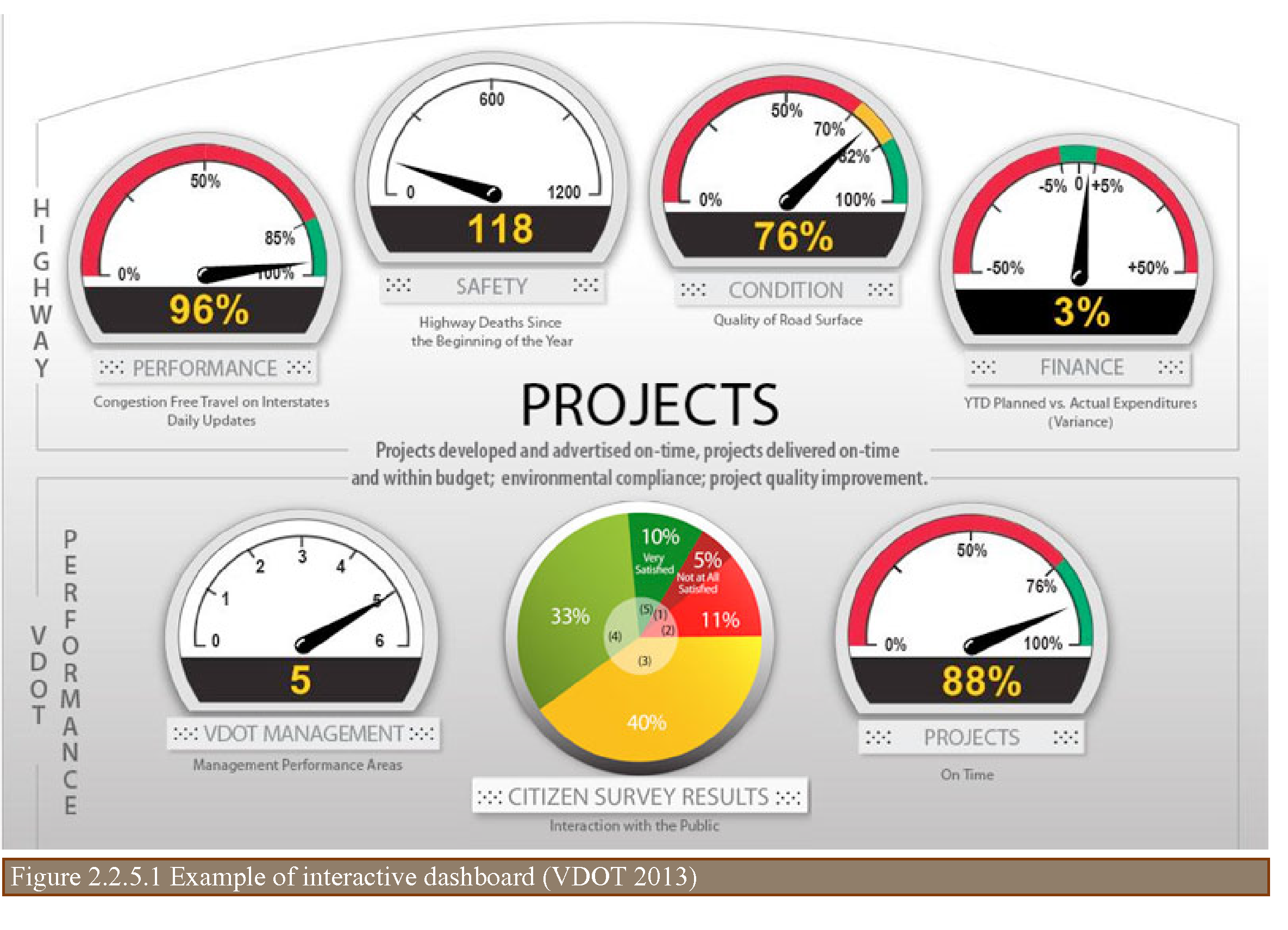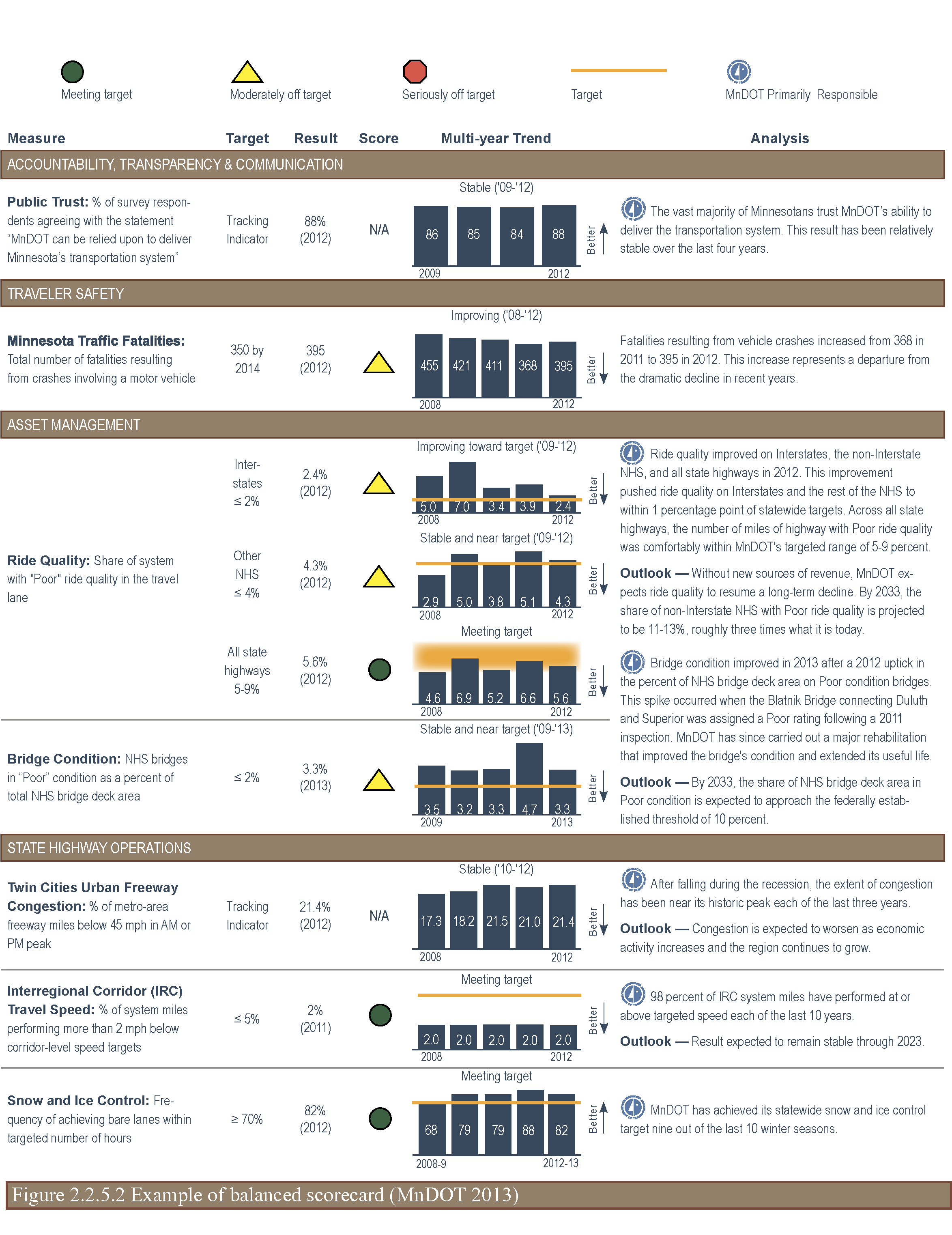
Asset Management Manual
A guide for practitioners!

Asset Management Manual
A guide for practitioners!
There are a number of ways in which performance measures can be summarized and reported. In deciding upon a reporting format, considerations should be given to the following:
At present, there is an increasing demand for organizations to report not only financial and service outcomes, but also the social and environmental effects, and to demonstrate to stakeholders and political authorities that the organization is managing their social and environmental responsibilities (PIARC 2003). In this case, the balance scorecard and the dashboard approaches, described below, are appropriate as tools for demonstrating the level of attention given to each outcome area among competing demands.
The balance scorecard and dashboard techniques use technical, non-technical, economic, and financial performance measures, normally less than 25, spread across two or more “themes” or “perspectives” (see examples in figures 2.2.5.1 and 2.2.5.2).
At the proficient level of service, performance measures related to the strategic objectives of the agency are normally reported at all organizational levels and to customers in an appropriate form (often via an annual report) (NAMS Group 2011).

